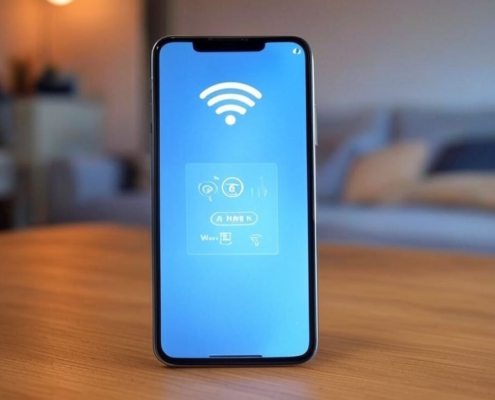Stopping, reporting, and preventing EBT fraud and theft
TDHS (The Tennessee Department of Human Services) uses EBT (Electronic Benefits Transfer) cards to administer benefits and is dedicated to providing Tennesseans with the resources they require to achieve financial stability. Regretfully, there are others who would resort to card stealing and other fraudulent methods in order to pilfer assistance intended to assist families in reaching financial security.
Notification: TDHS won’t reach customers via phone or text messaging to obtain their PIN or EBT card information. The EBT card data may be the target of a scam if you receive an email, text, or phone call from someone asking for it.
It is highly recommended that customers and businesses who utilize and receive benefits utilizing EBT cards evaluate reporting procedures and preventative actions to prevent benefit theft. To find out more about how to stop, report, and avoid EBT fraud and theft, click here.
What is the SNAP program, or Supplemental Nutrition Assistance?
The SNAP (Supplemental Nutrition Assistance Program) is a state-based nutritional assistance program run by the USDA (U.S. Department of Agriculture), formerly known as “Food Stamps.” TDHS (Tennessee Department of Human Services) oversees the management of SNAP in Tennessee.
It is possible to see SNAP (Supplemental Nutrition Assistance Program) as a means of assisting Tennesseans in realizing their true potential as independent, valuable contributors to our society and economics. In order to ensure that you are properly nourished and not concerned about where the next meal is coming from, TDHS administers SNAP with the premise that you may concentrate on employment, family well-being, and school. A strong work record, additional training, or education can boost self-sufficiency levels, earning potential, and employment opportunities. These changes can assist your family in overcoming the difficulties of today and moving towards a better tomorrow.
To find out more about EBT cards, emergency programming, SNAP (Supplemental Nutrition Assistance Program) applications, eligibility, and other relevant subjects, use the links and resources on this web page.
Replacement SNAP
There could be times when an electrical blackout deprives homes of essential food supplies, necessitating the need for Replacement SNAP (Supplemental Nutrition Assistance Program). Click here for additional information regarding replacement SNAP (Supplemental Nutrition Assistance Program) & associated supports when it becomes available.
How SNAP Is Operated
SNAP (Supplemental Nutrition Assistance Program) operates in accordance with federal regulations by giving qualifying households a grocery allowance for a predetermined period of time known as the certification period. An EBT Card (Electronic Benefits Card) is used to deliver benefits throughout the validation period. EBT cards may be utilized for paying for groceries at approved shops as well as online retailers, just like credit cards can. The resources and circumstances of the family determine how much SNAP (Supplemental Nutrition Assistance Program) is awarded as well as how long it takes to become certified.
Who is eligible for SNAP benefits?
Families—groups of people who reside together and prepare meals—that satisfy specific requirements, sometimes known as eligibility criteria, are eligible for SNAP (Supplemental Nutrition Assistance Program) assistance. The following elements are taken into account when determining SNAP eligibility: occupation, resources, citizenship, age and relationship, residence, social security card assignment, income, and associated deductions.
The aforementioned elements serve to ascertain not just a household’s qualification for SNAP (Supplemental Nutrition Assistance Program) benefits, but also whether more documentation is necessary for the family to continue receiving benefits after acceptance. The denial of SNAP benefits may occur due to the non-submission of necessary paperwork, such as Simplified Reporting Papers or change forms.
Where SNAP (Supplemental Nutrition Assistance Program) is used
The majority of grocery shops and certain internet merchants accept SNAP (Supplemental Nutrition Assistance Program) for the purchase of food items.
Find a store that takes SNAP (Supplemental Nutrition Assistance Program) in the neighborhood by clicking here, or click here to find out how to use SNAP to buy groceries online.
Click here to go to the USDA Eligible Food Items page and learn more about items that can be bought with SNAP.
SNAP (Supplemental Nutrition Assistance Program) application
Applying for SNAP (Supplemental Nutrition Assistance Program) can be done online by filling out an application OR it can be done offline by mailing or uploading a printed copy of the form to TDHS. You can either Click Here to get a SNAP (Supplemental Nutrition Assistance Program) form in the chosen language, or you can get one by contacting the nearest office to get one addressed to you.
Additionally, to disseminate SNAP information and offer application assistance, TDHS collaborates with neighborhood associations, organizations, and advocates throughout Tennessee. For families and individuals, the State’s Outreach collaborators can help with preliminary screening and enrollment processes. Click this link to locate a local SNAP (Supplemental Nutrition Assistance Program) Outreach member.
Additional paperwork and steps could be needed to activate your SNAP (Supplemental Nutrition Assistance Program) application and to maintain the benefits after you send it. To find out more regarding the criteria for forms and documents related to the SNAP (Supplemental Nutrition Assistance Program) application procedure, see this link.
Getting Ready to Submit a SNAP (Supplemental Nutrition Assistance Program) Application
Applicants must provide copies of their personal records, or verification documents, proving their requirement for SNAP (Supplemental Nutrition Assistance Program) in order to be eligible for benefits. Copies of records or other papers proving the following should be included in these eligibility validation documents:
- Social Security No. (SSD Card, for instance)
- Your identity (such as a driver’s license, passport, I-94 card, school ID card with a picture, resident alien document, or voter registration card)
- Where you reside (for instance, the address on your driver’s license, electricity bill, phone invoice, or leasing agreement)
- Income (examples include award letters, employer statements, and check stubs)
- Resources (e.g., title, registration, deed, bank statements)
- Housing expenses (such as mortgage payments, real estate taxes, rent receipts, homeowner’s insurance, and lease agreements)
- Utility costs (such as gas, water, and electricity bills)
It is recommended that you prepare duplicates of these papers in advance of submitting your SNAP (Supplemental Nutrition Assistance Program) application. The application procedure can be streamlined and delays can be avoided by submitting verification documentation no later than ten days after submitting a SNAP application. During the eligibility interview, other information could also be requested from you. For further information on SNAP (Supplemental Nutrition Assistance Program) eligibility, click here.
The processing time for applications can be shortened by uploading documentation through the One DHS Customers Website or resources available at the TDHS office. In order to expedite the application, authentication, or reporting procedure, customers who would prefer to mail details to TDHS must send duplicates of their personal records; original papers should not be sent as they might not be sent back.
To get a quick tutorial on setting up an account and requesting services through the One DHS Customers Portal, click this link, or you can download a guidance document.
Following Your SNAP Approval
In order to keep receiving SNAP after being authorized, your SNAP (Supplemental Nutrition Assistance Program) categorization may require you to provide additional paperwork or duplicates of documentation. If you don’t turn in your paperwork on time, you might not be approved for SNAP (Supplemental Nutrition Assistance Program), your benefits might be terminated, or you may be required to begin the application procedure again.
We invite you to go to the Application for Services webpage by clicking here to get detailed information on how to receive and maintain SNAP (Supplemental Nutrition Assistance Program) in Tennessee, which will help you keep your benefits once they are approved. To track the status of your SNAP application and keep track of related dates and paperwork requirements, you may also download the checklist using the links provided and utilize it for an “at-home” reference.
Application Checklists for SNAP (Supplemental Nutrition Assistance Program)
- Checklist for Four-Six-Month Certificate
- Reporting Made Simpler, The 24-month Certification Checklist is intended for homes where every member is over 60 or has a disability.
- Change Notification Checklist (For families with members who work for themselves and for families that have been approved for receiving SNAP for fewer than 4 months).
The Goal of Self-Sufficiency
TDHS offers SNAP (Supplemental Nutrition Assistance Program) as one of its initiatives to assist Tennesseans in realizing their true potential. By the conclusion of your certificate term, we trust you will be able to take care of the family on your own without assistance from other sources and be no longer eligible for SNAP.






























